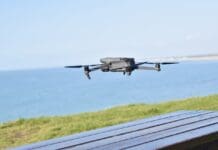This post is also available in:
 עברית (Hebrew)
עברית (Hebrew)
If a part fails for an airline, it could result in a canceled flight, or worse, a crash. For the Pentagon, it could also mean the success or failure of a mission. Being able to modernize existing supply chains and collect data from military planes and ships — which in many cases are decades old — is imperative. As the Pentagon shops for technology that can predict when its weapons might break, Microsoft is shopping its artificial intelligence to defense decision-makers in Washington. The company has been demonstrating its AI and machine-learning tech for military officials in recent weeks.
Senior military officials, especially in the Air Force, say they need need artificial intelligence-driven predictive maintenance technology. The tech is already is used by commercial airlines. And the Air Force is experimenting with predictive maintenance technology on its C-5 cargo planes and B-1 bombers — two aircraft historically in short supply due to frequently-needed repairs.
Microsoft and engine-maker Rolls-Royce built a platform that predicts when aircraft power plants will break down. The program also manages the necessary maintenance and logistics for parts supplies.
The technology could help the Navy improve readiness levels of its F/A-18 fighter jets and ships, according to defenseone.com.
The system Microsoft built for Rolls-Royce combines machine learning with its Dynamics 365 and Azure programs “to aggregate all of the sensors and where the data is coming from off the aircraft.”
Each Rolls-Royce engine is “instrumented with thousands of sensors” that record data, said Jim Ford, director of cloud strategy and solutions for Microsoft Federal. One engine on the tilt-rotor V-22 Osprey aircraft creates about one terabyte of data on an average flight.
“Rolls-Royce understood that was an asset,” Ford said. “That data was as much part of their solution as a physical piece of equipment.”
During a demonstration of the program, data generated from an engine appeared on a giant touchscreen. The data showed a plane engine was burning more fuel than usual.
“Now when you talk about the aggregation of data, a lot of times you’re using machine learning — whether it be in a supervised or an unsupervised fashion — in which it should be able to provide correlated analytic insights,” Ford said. “You don’t necessarily know the cause, but now you can start to piece together … if there’s an issue without having to look at things from a serial perspective.”
The data showed an engine valve was mispositioned and temperature levels were not normal. The machine then predicted a part would fail before its scheduled maintenance, allowing the airline to change the part before it broke.
























